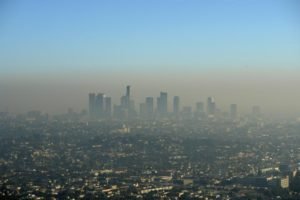
Experiments with Air
Air pressure is 15 lbs. per square inch. These experiments will show that air has weight, exerts pressure, and takes up space and when air expands it makes noise. There is air in water, our bodies, and the soil and air affects many things around us. Give examples such as the rust of iron is caused by oxygen in the air. Thunder is the rapid expansion of air (and so is popping a bag or a balloon.). Air currents can be seen in smoke circulation. The air toy I use that young students like the most is a plastic arm with a little fist on the end. I open it and ask them if anything is inside. They take turns looking and all say nothing is inside. So I close it with the little fist and squeeze it and it shoots off! They learn that air takes up space and has power to move things! I wish I could find another one. Mine is almost worn out! There is also a toy that gives someone a “blast of air”! I ask kids to blow on their hand and feel the air. Though they cannot see it – it is there (invisible to them like germs). This is a good time to impress upon them that they can’t see everything – some things are so small that they are invisible!
- To show weight – tie a balloon on each end of a dowel ( pop one and watch other fall)
- Thunder = fill paper bag with air and listen to the sound from the rapid expansion of air
- Showing currents = a smoking rope in a jar. Ask why circulation occurs.
- 2 wet cloths on chalkboard. Fan one of them. Air hastens evaporation. Dry hot air hastens it even more.
- If you cut off the air from a flame it goes out (no oxygen.)
- Put a string through a straw and attach the string to opposite walls and attach a filled rocket balloon (that you can let the air out of) with tape to the straw to show jet thrust.
- Put a paper in a jar and lower it in water. The compressed air keeps it dry.
- Put water in jar with a piece of cardboard over it. Turn it upside down and see air pressure at work.
- Try to separate 2 rubber cups to feel air pressure
- Put some water on the back of your hand and blow. How does it feel? Evaporation takes heat with it.
- Use 2 jars of water and a tube to siphon and create an air vacuum
- Two objects of different weight fall at = speed and shape changes air resistance. (Galileo). Try a crumpled paper and a flat paper.
- Air moves things. Try straws and ping pong balls.
Jump on air! - Name some ways we use air. Ex. tires, bubble wrap, mattresses, cooling,
- Make little flags to check out currents in the classroom
- Straw and water make a dropper,
- Name some sounds air makes. Bubble wrap makes a sound when popped. And sound is made when air moves through trees, the roar of a hurricane.
- Ice in a can with salt forms dew on outside.
- Pour air from one glass to another under water
- Put a balloon in the fridge. It expands when taken out.
- Get a solar balloon and let kids see how the warmed air in the balloon (from the heat of the sun) makes the balloon rise.
Airborne Pollutants
EXPERIMENT TO TEST FOR AIRBORNE POLLUTANTS
Air is invisible. It is made up of gases that cannot be seen. Many major air pollutants are invisible gases. In some areas of the country, these air pollutants can build to levels where they can be seen. For example, in some cities, smoky, yellowish clouds of primarily car exhaust build up to create smog.
Other easily visible air pollutants, called particulate matter, are made up of tiny particles of solids or droplets of liquids. Some of these particulates are naturally occurring and may pose less of a problem to human health than man-made particulates. Some natural particulates include pollen, wind-blown dust and volcanic ash. Man- made particulates are generated by coal and oil- fired power plants and manufacturing plants, automobile and diesel fuels as well as fireplaces and wood-burning stoves among others.
Place collectors where they can hang freely – not touching other surfaces and where they will not be touched by other students. Be sure to let the custodial staff know about your experiment, too. These particles carried through the air can be harmful to plants, animals and humans. Buildings and statues can be discolored and corroded
Let students make stick-up collectors to see the air pollution. Cut holes in strips of poster paper and cover the holes on one side with clear tape. Put name, date, and location on each strip and select places around the school to hang them. They should hang freely and not be touched. Tell custodial staff about the experiment.
After a week, retrieve the Stick Up collectors and analyze. Can students see pollution with the naked eye. Inspect the strips with a magnifying glass or microscope.
